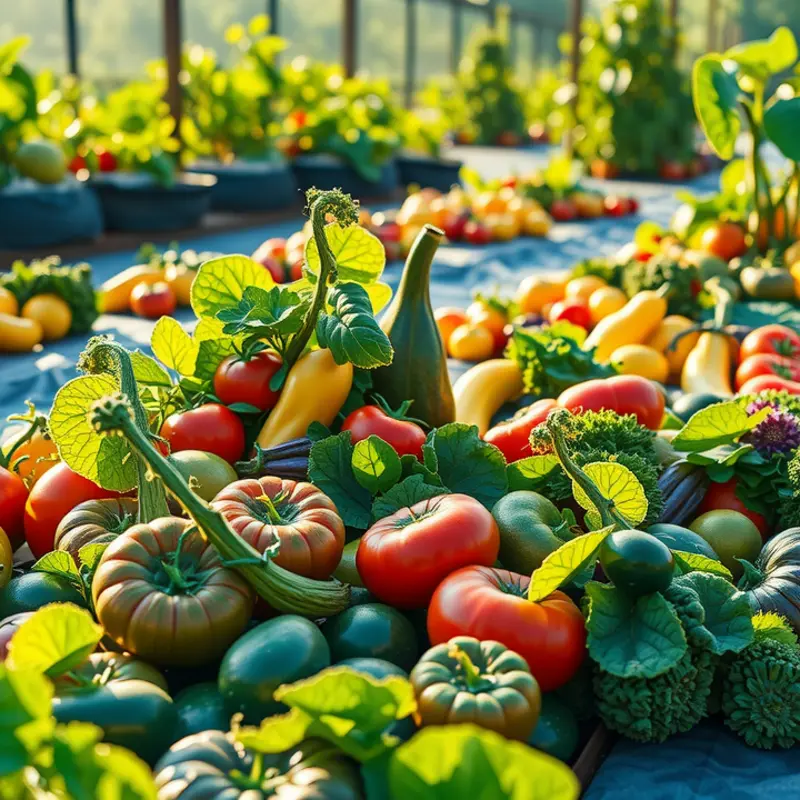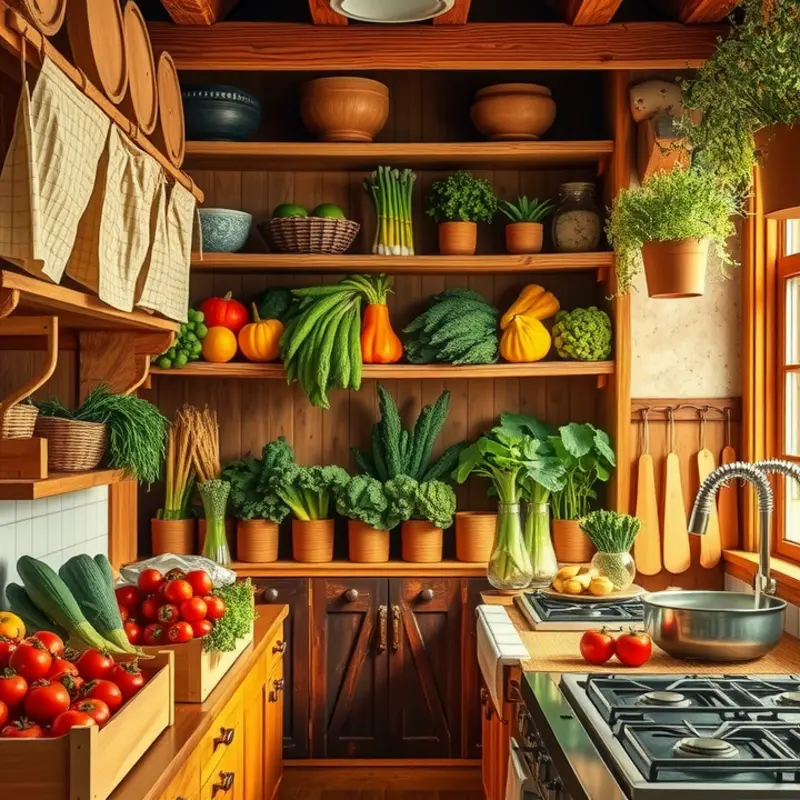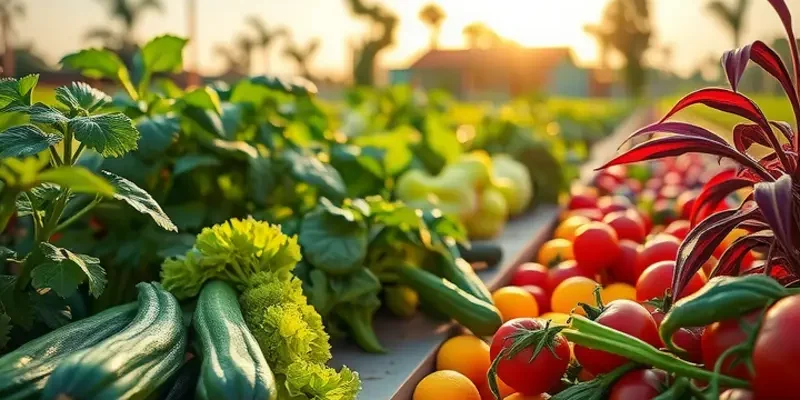Keeping vegetables fresh and crisp is crucial for maximizing their taste and nutritional value. However, improper storage can lead to wilting and waste. This guide provides actionable strategies to ensure that your prized produce remains at its best for longer. By implementing these effective storage techniques, you can enjoy the crunchiness of your vegetables and minimize food spoilage, all while managing your kitchen efficiently.
The Science of Vegetable Freshness

Understanding the science behind vegetable freshness is essential for maintaining their quality and nutritional value. Temperature, humidity, and light exposure are three critical factors influencing the lifespan of your produce. Let’s explore how each of these elements affects vegetables and how one can create the optimal storage environment at home.
Temperature and Its Effects
Temperature is a primary factor in keeping vegetables fresh. Most vegetables should be stored in the refrigerator, where cooler temperatures can slow down the metabolic activity and delay spoilage. However, some vegetables like tomatoes and potatoes prefer room temperature for optimal taste and texture. Refrigerating these can lead to a loss of flavor and undesirable texture changes.
The ideal fridge temperature for most vegetables is around 32°F to 40°F. This range helps to keep them crisp and inhibits microbial growth. Investing in a fridge thermometer can ensure your appliance maintains this range. You can explore more eco-smart storage practices by visiting this page on eco-smart kitchen storage.
Humidity and Vegetable Hydration
High humidity levels in storage environments help retain the moisture within vegetables, which is crucial for maintaining their firmness and preventing wilting. Most refrigerators have crisper drawers specifically designed to manage humidity. Use the high-humidity drawer for vegetables like leafy greens and herbs, which are prone to wilting. In contrast, low-humidity drawers work better for produce emitting more gas, such as onions and peppers.
Impact of Light on Freshness
Light exposure can accelerate the degradation of certain nutrients and lead to discoloration or sprouting in some vegetables. For instance, potatoes exposed to light develop green patches, indicating the presence of the toxic compound solanine. Store them in a dark, cool area to prevent such effects.
The Role of Washing and Preparation
Washing vegetables before storage can introduce unwanted moisture, increasing the risk of mold and rot. It is often better to wash vegetables just before consumption or use. However, if washing is necessary beforehand, drying them thoroughly with a towel can help mitigate moisture issues.
Pre-preparation, like cutting or peeling, can also reduce shelf life due to increased surface area exposed to air. If pre-cutting for convenience is desired, ensure that vegetables are stored in an airtight container, lined with a damp paper towel, to maintain hydration without adding excess moisture.
By creating the right conditions and understanding how these factors contribute to vegetable freshness, you can extend the life of your produce and enjoy them at their peak quality. This not only reduces waste but also enhances food management strategies and contributes to a more sustainable kitchen.
Storage Strategies for Maximum Crispness

Storing vegetables correctly can be compared to a delicate balancing act, where the goal is to maintain moisture without encouraging spoilage. Leafy greens, for instance, thrive when wrapped in a damp paper towel and stored in a breathable plastic or cloth bag. This method allows the leaves to stay hydrated while preventing excess moisture that can lead to wilting. Ensuring that they are dry before storage can prevent molds and decompose that arise from excess water exposure.
Meanwhile, root vegetables such as carrots and radishes favor a different approach. Removing the green tops can help prevent moisture loss through evaporation. Once trimmed, placing them in a container with a bit of water or a sealed bag in the refrigerator drawers optimizes their texture over time. For harder roots like potatoes, a cool, dark place such as a pantry or cellar suits best, away from onions that emit ethylene gas, which can speed up spoilage.
Herbs, delicate by nature, can lose their vibrancy quickly without proper care. An effective technique is to treat them like fresh flowers by snipping their stems and placing them in a jar with a little water. Covering them loosely with a breathable plastic bag retains freshness for extended periods. For herbs that tend to spoil faster, like basil, storing them at room temperature away from direct sunlight is advisable to maintain their green glory.
Refrigeration practices can dictate the crispness of many vegetables, with temperature and humidity being key players. Adjusting crisper drawers to higher humidity settings can help vegetables like greens and most fruits remain hydrated. In contrast, lower humidity settings are better for fruits that emit ethylene gas, separating them from other veggies.
Ethylene gas exposure can accelerate the ripening process, where some vegetables work best in isolation. Keeping ethylene-sensitive vegetables like broccoli and leafy greens separate from ethylene producers like tomatoes can prevent premature spoilage. Organizing veggies by their storage requirements can ensure maximum freshness across your refrigerator.
For those interested in more sustainable storage options, consider implementing practices that reduce waste. Eco-smart kitchen storage techniques can support broader environmental goals while extending the life of your produce. By investing time in understanding these practices, you can reduce food waste and maintain household organization.
Ultimately, understanding the unique storage needs of each vegetable helps in crafting a pleasant culinary experience. With the right methods, your veggies can remain crisp and flavorful, reducing waste and enhancing your home food management capabilities.
Final words
Properly storing your vegetables can greatly enhance their freshness and extend their shelf life. By understanding the science behind vegetable preservation and implementing specific storage techniques tailored to different types, you can minimize waste and enjoy crisper vegetables for longer. Apply these strategies in your kitchen to ensure that every bite of your healthy produce remains as delicious as the day you bought it. Take the time to invest in effective food management practices, and your taste buds will thank you.







